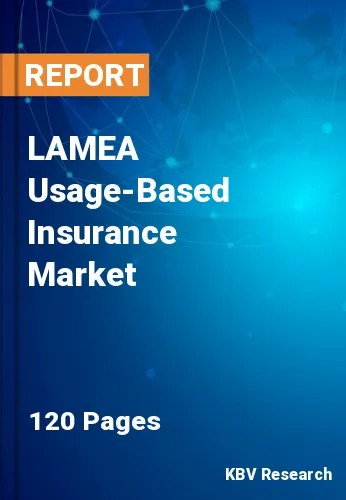The Latin America, Middle East and Africa Usage-based insurance Market would witness market growth of 27.7% CAGR during the forecast period (2023-2030).
The success of UBI hinges on collecting and analyzing vast amounts of personal and behavioral data. As a result, data privacy and security concerns are paramount. Striking a delicate balance between extracting valuable insights and safeguarding individual privacy is a challenge that insurers must navigate to gain and maintain consumer trust. The regulatory environment significantly shapes the trajectory of the market. Insurers must comply with data protection laws and navigate evolving telematics and IoT data usage regulations. As the industry matures, regulatory frameworks are likely to evolve, influencing the scope and implementation of UBI across different regions.
Moreover, the success of UBI models relies on the acceptance and understanding of consumers. Educating policyholders about the benefits of UBI, such as personalized pricing and enhanced risk management, is essential. Addressing skepticism or mistrust regarding data collection practices is crucial for fostering a positive perception of this insurance. The widespread adoption of UBI is contingent upon robust technological infrastructure and connectivity. Insurers must ensure seamless integration of telematics devices, IoT sensors, and data analytics platforms. Challenges related to connectivity in certain geographic areas or within specific vehicles may impact the scalability and effectiveness of UBI programs.
The International Trade Administration estimates that in 2020, Saudi Arabia constituted 35% of the vehicles sold in the MENA region and nearly 52% of the automobiles sold in the Gulf Cooperation Council (GCC). In 2019, 556 thousand vehicles were sold in Saudi Arabia; in 2020, 436 thousand vehicles were sold. The projected sales figure by 2025 is 543,000 units. The Saudi Arabian automotive sector comprises various vehicles, including passenger cars, SUVs, and commercial vehicles. UBI programs can cater to this diversity by offering customized insurance solutions tailored to different types of vehicles and their usage patterns. Growing vehicle sales contribute to an increase in vehicle ownership rates. As more individuals in Saudi Arabia own vehicles, the potential demand for auto insurance, including UBI, expands. As a result, these aspects will boost market growth in the coming years.
The Brazil market dominated the LAMEA Usage-Based Insurance Market by Country in 2022, and would continue to be a dominant market till 2030; thereby, achieving a market value of $3,050.5 Million by 2030. The Argentina market is showcasing a CAGR of 28.1% during (2023 - 2030). Additionally, The UAE market would register a CAGR of 27.3% during (2023 - 2030).
Free Valuable Insights: The Worldwide Usage-Based Insurance Market is Projected to reach USD 161.5 Billion by 2030, at a CAGR of 25.5%
Based on Vehicle Age, the market is segmented into New Vehicles, and Used Vehicles. Based on Policy, the market is segmented into Pay-As-You-Drive (PAYD), Pay-How-You-Drive (PHYD), and Manage-How-You-Drive (MHYD). Based on Vehicle Type, the market is segmented into Light-Duty Vehicle (LDV), and Heavy-Duty Vehicle (HDV). Based on Technology, the market is segmented into Black Box, OBD (On-Board Diagnostics)-II, Smartphone, and Hybrid. Based on countries, the market is segmented into Brazil, Argentina, UAE, Saudi Arabia, South Africa, Nigeria, and Rest of LAMEA.
By Vehicle Age
By Policy
By Vehicle Type
By Technology
By Country
Our team of dedicated experts can provide you with attractive expansion opportunities for your business.

